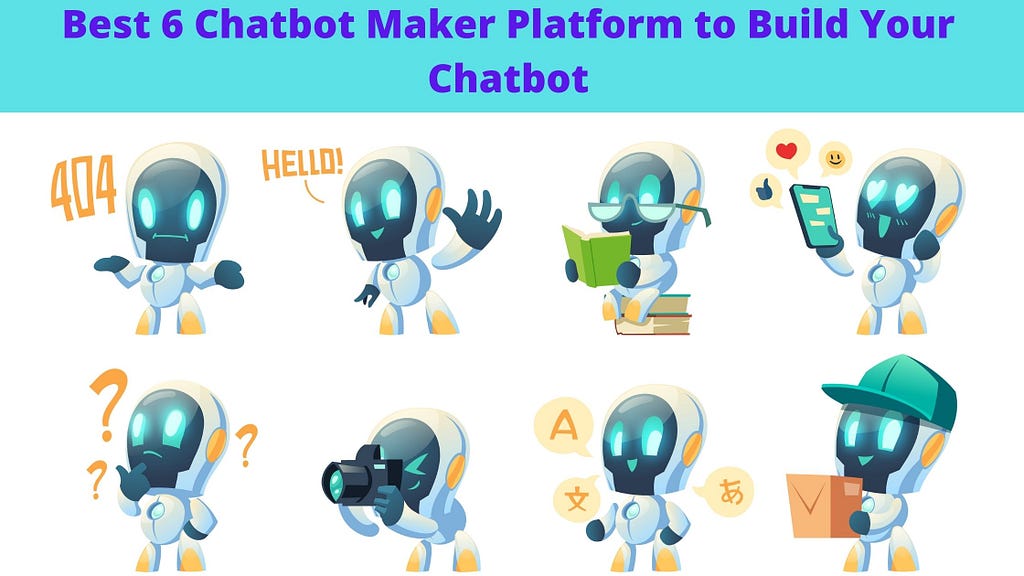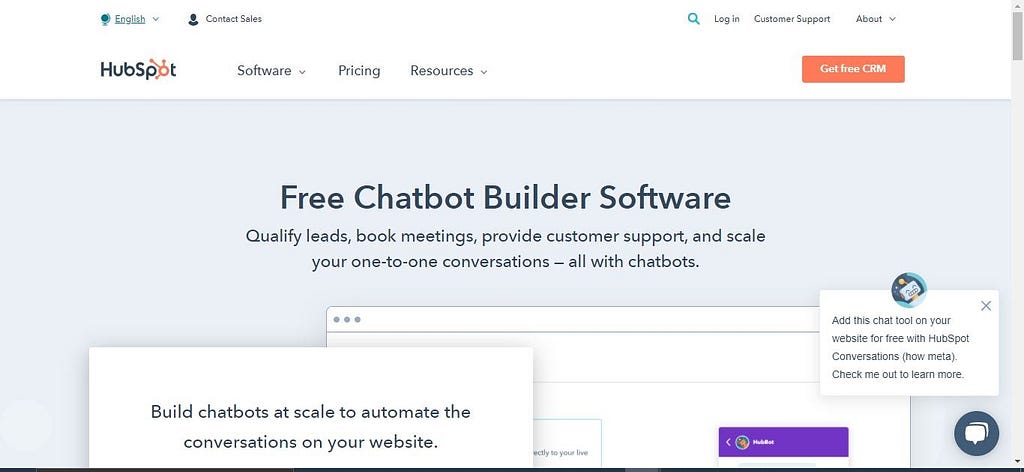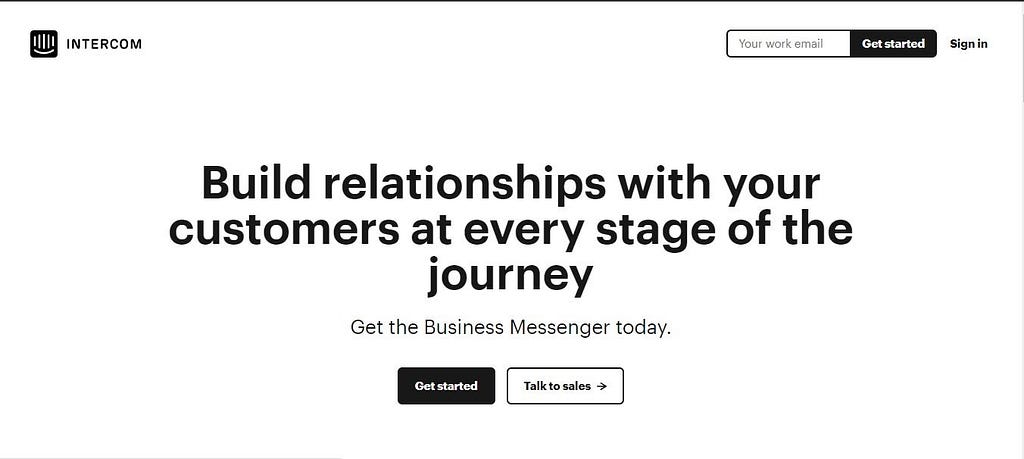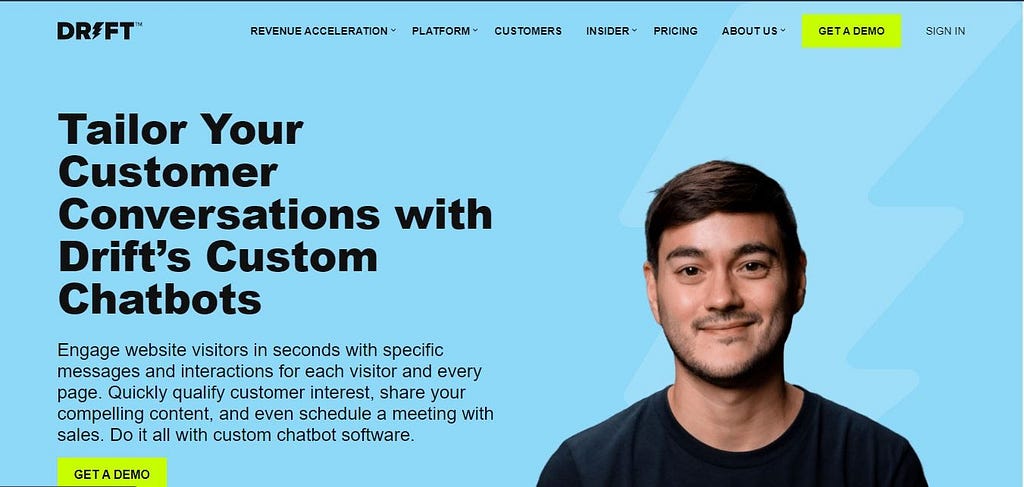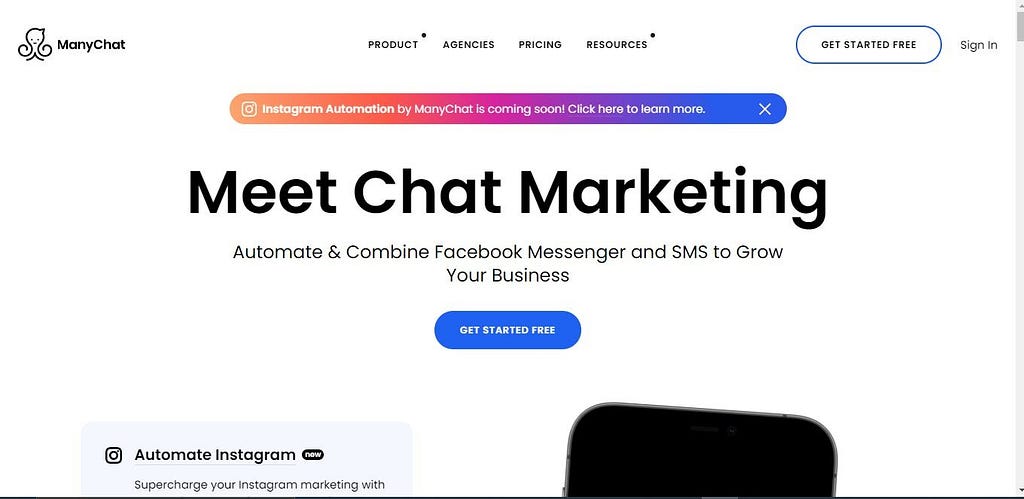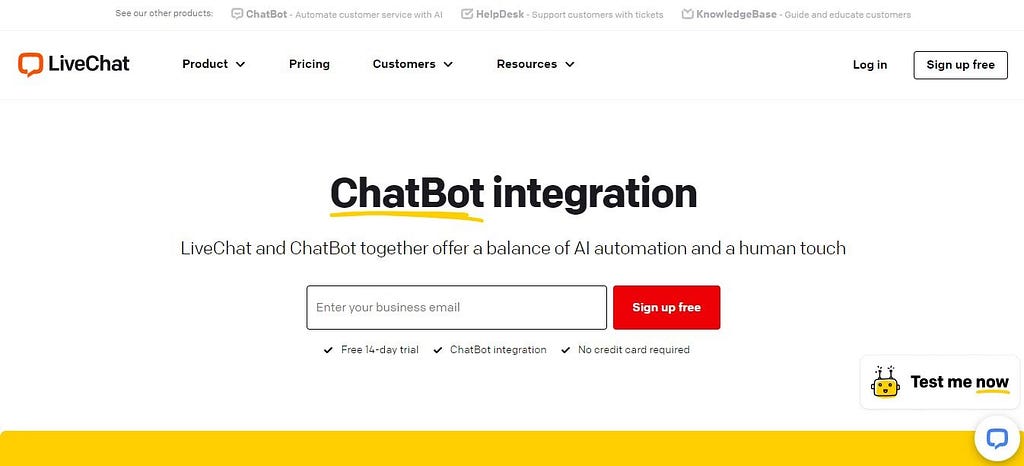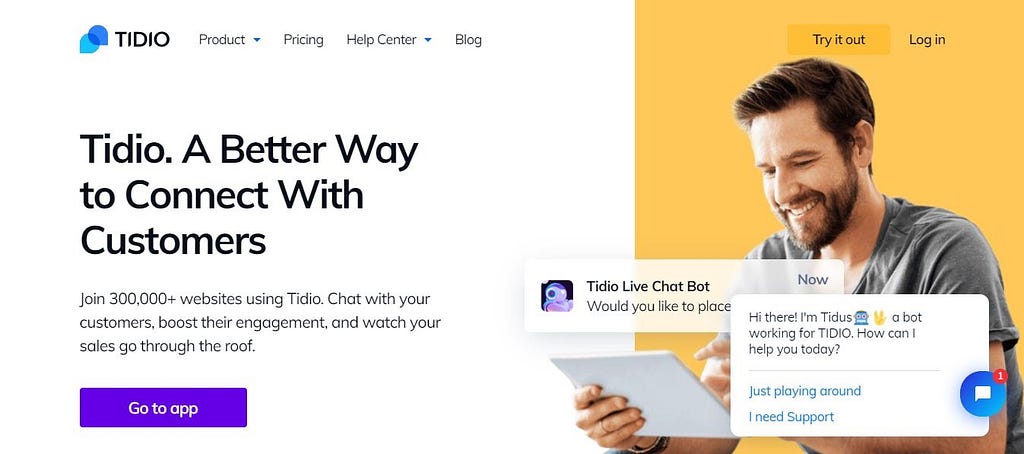
No one wants to install a new app for every business or service they want to interact with.
That’s what Zuckerberg said in his keynote speech while launching Facebook Messenger chatbots.
But chatbots had been around for a while, even before he said that. How did he plan on changing the game with his Messenger chatbots?
What are Facebook Messenger Chatbots?
Though Facebook remains unbeaten, many emerging conversational platforms provide the same ‘social’ experience but in different ways. One such conversational platform that has caught all the marketers’ attention is an AI-equipped chatbot! AI chatbots have been used extensively, across all the sectors of the industries. From your bank organization to your home, everything has turned ‘intelligent’, bringing upon the age of smart-living. Businesses were looking to use this AI-driven chatbot technology innovatively. And that’s when the idea arose- “Why don’t we integrate chatbots on social media platforms? Facebook has 1.4 billion daily users, so won’t that be a great platform to connect our business to a wider audience?”
Fast-forward to today
It’s been a couple of years since Mark Zuckerberg announced that businesses can make Facebook Messenger chatbots for business accounts and everyone’s been going gaga ever since! Facebook is the largest messaging platform available today with over a million people on Messenger. According to the stats, the top 4 messaging apps have more users than the top 4 social networks! With businesses leveraging all the benefits from Messenger chatbots, there has been an increase in the number of registrations.
There are currently more than 300,000 active chatbots on Facebook Messenger! Chatbots can take on the burden of time-consuming business tasks and handle communications with your visitors, becoming the first point of contact. This is accelerating communication between businesses and customers at a rapid scale. And Facebook’s data shows that!
- 61% of people in the UK messaged a business between March and June 2018
- 53% of people are more likely to interact with a business they can message directly
- More than 50% of people consider business messaging as the modern way to communicate
Now more than ever, there’s a need to add a bot to your Facebook page — it helps with responding to customers quicker than ever and provides them with a high-quality service.
Yet, many businesses refrain from merging bots into their pages on social platforms! And why? Because they think building chatbots is expensive, time-consuming, and is unexplored terrain for those unfamiliar with coding. And yes it is, but only when you build a bot manually!

What’s different about Facebook Messenger chatbots?
For starters, you don’t have to be a programmer to build a sophisticated Messenger chatbot. Mark’s major advantage lies in the fact that Messenger notifications pop up rather overtly on the user’s screen. This causes them to be noticed and replied to even if the user isn’t on the app then.
This is pivotal since native chatbots living in websites & mobile applications could only reach users if and when they were using these websites or apps.
Zuckerberg literally blessed marketers with the ability to push promotional messages & content in a way that people will notice.
Promotion!
Facebook made it really easy for users to find your bots. They can search for them through the Messenger application.
But the good folks over at Messenger didn’t want to force you to leave discovery up to chance. They’ve given you opportunities to be proactive and promote your bot for your customers to interact with. Here’s a rundown on some of the methods you can employ to get your bot out for the masses to use:
1. Messenger links
Facebook generates links to your Messenger bot, using your Facebook page’s username. Users clicking those messenger links will get be taken directly to your Facebook Messenger chatbot.
2. Customer matching
This lets you connect customers that are already in your database to your bot. Messenger lets you add them by their phone numbers. You can use their phone numbers to send them messages directly in your Messenger bot.
3. Messenger codes
These are essentially QR codes for your Messenger Chatbots. They can be printed out & stuck in physical locations and work in a fashion similar to Snapchat and Instagram codes. On being scanned, they redirect users to your chatbot.
4. Messenger buttons
Facebook lets you embed these buttons into your website. This allows anyone who clicks on them to initiate a conversation with your chatbot.
What’s in it for me?
Good question. The benefits of employing Messenger Chatbots are numerous. Here are a couple of ways in which you could use a Messenger bot to improve your business processes.
1. Catch them where they are
Your users are already chatting on Facebook. That’s where you bait them in. You don’t have to make the effort to send them to an external site or a different application (which they may not even want to download in the first place). Make it easy. Comfortable. Minimize the effort that they need to put in to reach you and you’ve got yourself a winning strategy.
In fact, you can actually collect email addresses by simply asking for them and then, using Zapier, transfer their replies into your Email CRM (eg. MailChimp & Salesforce)
You even qualify leads, using the decision node to find out whether they fit certain criteria.
2. Make it personal(ized)
Your Messenger bots can collect customer preference data, based on their conversations with the users. Now, using this information, they can curate marketing messages, offers, promotional messages, and content relevant to the users’ interests.
Personalized content and offers are more powerful than average marketing messages. Messenger chatbots help you employ this with ease.
3. Get ’em clickin’
Messenger Chatbots boast phenomenal ORs and CTRs. On average, Messenger chats have Open Rates of 70–80% and Click-Through Rates well above 20%, whereas emails can expect to achieve 5–10% open rates. Send them content that interests them enough and they will take action.
4. Make it obvious
One of the biggest advantages of deploying a bot on Messenger — notifications are obvious. The chances of readers missing out on what you have to say are tremendously reduced. And you can thank Facebook Messenger’s ‘in-your-face style of sending notifications for that.
If your users have conversations with your Messenger chatbots on their phones (quite likely), you’re in luck. Facebook Messenger sends out notifications that are the absolute opposite of subtlety. And clearly, it’s working. The Open Rates and Click-Through Rates above make that quite obvious.
5. Build relationships
The only way someone will buy from you is if they trust you. And the best way to get them to trust you is by establishing a relationship with them.
Messenger bots allow you to build a relationship with your potential customers. Especially if you use these bots to share content that provides them with value. Sending them content that is beneficial and/or educational to them gets users to trust you, and that’s when your chances of getting a sale go up.
6. Diversify service lines
You can only handle so many service requests via phone calls. If that’s your only way of taking care of your customers, your lines will certainly get swamped. Using Messenger chatbots, you can provide support to multiple customers at the same time.
Even if customers want to have a conversation with an actual human agent, with Live Chat software, the agent can handle more than 7 customers simultaneously.
7. Solve the ‘abandoned cart’ issue
An issue that has been plaguing E-Commerce operators ever since E-Commerce came into existence. Abandoned carts are the one thing that E-Commerce businesses have nightmares about.
Messenger chatbots reduce cart abandonment by making the checkout process substantially easier.
They even help in retrieving carts that were already abandoned. By sending the users reminders and offers, E-commerce chatbots can lure them back into completing their purchases.
8. Educate them!
There are some things about your product or service that your users need to know to utilize your offerings to their full potential. But a lot of them aren’t too keen on digging through your knowledge base to find a bit of information. It’s too much effort. A Facebook Messenger Chatbot would be a simple and effective way for them to access information about your products and services.
All they’d need to do is type in the query they have in mind and then could receive the information directly in chat format. Alternatively, they could even get a link that takes them to the exact spot in your online knowledge base that explains the topic that they’re interested in. No need for them to take the effort to painstakingly navigate through your knowledge base (and possibly give up before finding what they need).
9. Uses better engagement tactics
As mentioned above, Facebook bots take your customers’ information, but this time they can also personalize their content by analyzing their history of searches and interests. Therefore, you can send your customers links, images, carousels, and much more! Yes, you can sell your product through your Facebook Messenger bot! You can also provide a CTA that directs your customer to your website or allows them to make payments. Hit a home run, E-commerce!
10. Deliver daily or weekly messages
Engage your audience by sending in notifications, suggestions, news on discounts, etc through your Facebook Messenger chatbot.
11. Prompt users to book services
You can make use of carousels and provide CTA buttons on your Messenger to book services or buy your products. By providing CTA through your chatbot, your customers don’t have enough time to change their minds and move down the sales funnel faster.
12. Send special offers or coupons
If you’re an e-commerce enterprise, Facebook marketing seems to be the ideal strategy for you. Sending your customers special offers and discount notifications through your Messenger chatbot is a lot more effective than sending emails that end up going into the spam section. Your message is communicated clearly and effectively with chatbots.
13. Conduct polls and surveys
One interesting way of collecting information- Polls and surveys. You can now create polls on your chatbot and send them to your customers and collect their feedback easily or even make statistical analyses.
14. Announce new blog posts or send new content to subscribers
One great way of marketing your brand and increasing ROI is through blog posts and articles. And with chatbots, you can increase your traffic by sending your audience announcements, links, or even a piece of content.
15. Inform any new updates or features
Facebook chatbots are ideal for communicating any updates and new features in your business. You don’t have to spend any time promoting your new updates, you can just do it cost-effectively through your chatbot!
16. Save time and money on customer care
Customers expect 24/7 availability, but they hate waiting on hold. They also ask many of the same questions over and over (and over) again. If you’re spending a lot of time helping people track deliveries, check your return policy, or book appointments, a little automation will go a long way. Free up your focus for the tasks that a Messenger chatbot can’t do.
Trending Bot Articles:
3. Concierge Bot: Handle Multiple Chatbots from One Chat Screen
What are the benefits of chatbots in Messenger?
The advantages of chatbots are many. But to list them down conceptually, here are a few benefits of Chatbots in Messenger.
1. Better open rates
Messenger marketing crushes email when it comes to engagement. A competitive email marketer can expect to achieve 5–10% open rates. But with Messenger marketing, open rates skyrocket to 70–80% in the first hour.
2. Better engagement
Chatbots on Facebook provide a better channel for businesses to engage with their customers and reach a wider audience.
3. Automate Q&A for common queries
Chatbots can be the first point of contact for your business and by integrating them on Facebook, you can be easily available to your customers and provide assistance for common queries 24/7.
4. Deliver daily or weekly messages
Engage your audience by sending in notifications, suggestions, news on discounts, etc through your Facebook Messenger chatbot.
5. Prompt users to book services
You can make use of carousels and provide CTA buttons on your Messenger to book services or buy your products. By providing CTA through your chatbot, your customers don’t have enough time to change their minds and move down the sales funnel faster.
6. Send special offers or coupons
If you’re an e-commerce enterprise, Facebook marketing seems to be the ideal strategy for you. Sending your customers special offers and discount notifications through your Messenger chatbot is a lot more effective than sending emails that end up going into the spam section. Your message is communicated clearly and effectively with chatbots.
7. Conduct polls and surveys
One interesting way of collecting information- Polls and surveys. You can now create polls on your chatbot and send them to your customers and collect their feedbacks easily or even make statistical analysis.
8. Announce new blog posts or send new content to subscribers
One great way of marketing your brand and increasing ROI is through blog posts and articles. And with chatbots, you can increase your traffic by sending your audience announcements, links, or even a piece of content.
Inform any new updates or features:
Chatbots are ideal for communicating any updates and new features in your business. You don’t have to spend any time promoting your new updates, you can just do it cost-effectively through your chatbot!
9. Save time and money on customer care
Customers expect 24/7 availability, but they hate waiting on hold. They also ask many of the same questions over and over (and over) again. If you’re spending a lot of time helping people track deliveries, check your return policy, or book appointments, a little automation will go a long way. Free up your focus for the tasks that a Messenger chatbot can’t do.
10. Identify leads
As your bot greets potential customers, it can identify their needs, ask basic questions, (i.e., “What’s your budget?”), and immediately direct high-quality leads to your human sales team.
11. Handle e-commerce transactions
With the right script, bots can do the selling, too. And because everything happens without leaving the comfort of Facebook Messenger, drop-off rates are lower than in a traditional ad-to-webpage pipeline. Also, conversational commerce leaves room for personalized upselling as the bot makes suggestions. Everything from “Seems your flight won’t be leaving until 4 PM. Would you prefer a late check-out?” to “Fries with that?”.
What’s the world doing with them?
Ananda livemore
As with any company in the telecommunications industry, providing phone and internet services isn’t enough. Ananda Livemore was putting in continuous efforts to improve the customer experience while adapting to new digital technologies to stay ahead of the market.
Ananda livemore is a 4G+ data operator with international service standards, a state-of-the-art network. It’s owned and operated by Amara Communications, a leading telecommunications service provider in Myanmar. Through the delivery of high-speed, reliable broadband solutions, ananda aims to provide a truly liberating digital experience to enterprise customers and consumers.
A Messenger chatbot allows them to improve their customer experience by providing easy access to information while reducing wait time. Instead of customers going through the usual route of calls, and long wait times, Engati’s messenger bots answered customer queries immediately.
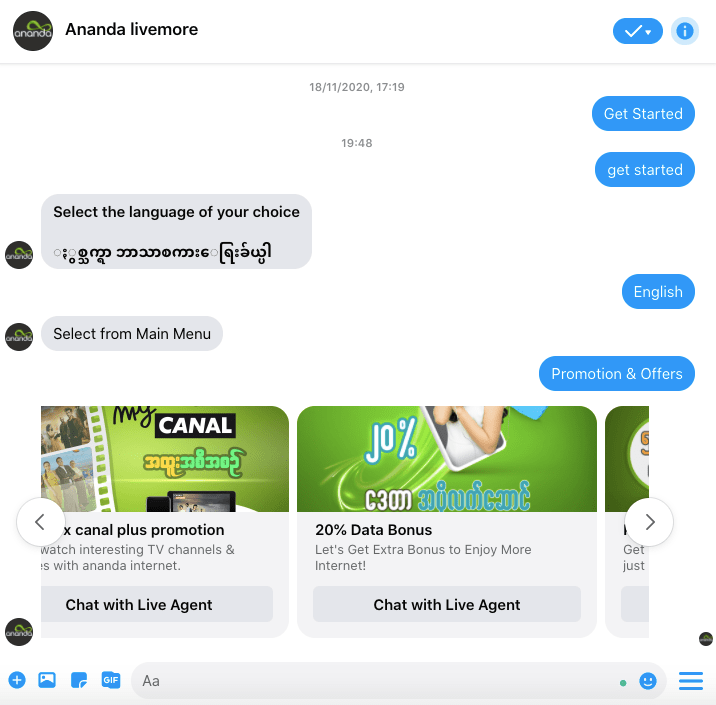
2. HP
HP came up with a Messenger chatbot that allowed people to print documents, files, and pictures through any connected printer. PrintBot lets people send images directly from Messenger to a printer, regardless of where they were. They no longer had to be physically present and hunt for connection wires to get something printed.
3. iMile
iMile is a flexible logistics solutions provider for E-commerce deliveries and courier services for the Middle East. When expecting a courier, customers typically feel a lot of anxiety. Queries on tracking and scheduling are bound to come up and clog support lines. Since these queries were repetitive, IMile needed a solution that could automate addressing these queries. They also needed a solution to respond to these queries in English and Arabic.
Hence they deployed a multilingual chatbot over Facebook Messenger. With Engati’s omnichannel feature, iMIle was able to deploy the bot on both Facebook and their website. They could answer multiple users at once, answering almost every query coming.
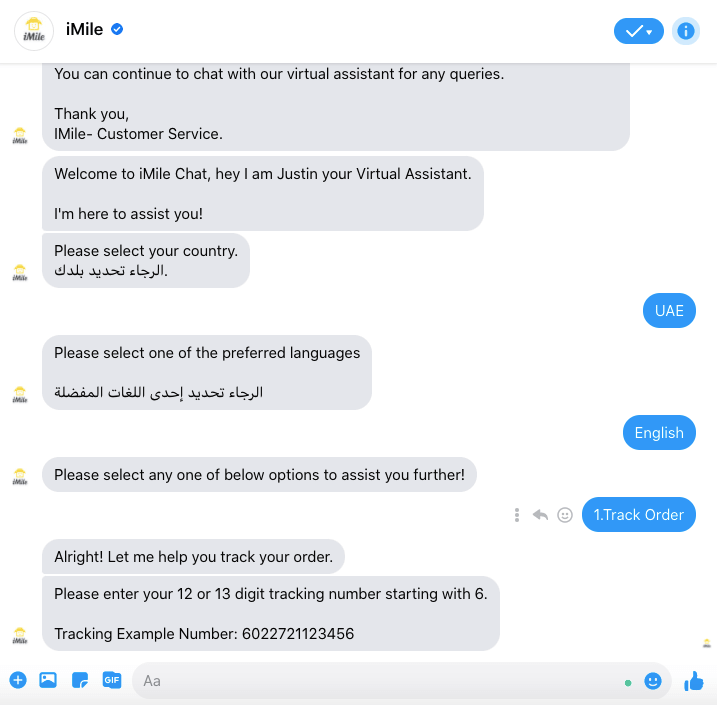
4. Marriott
Marriott created their very first Facebook bot back in 2016. It allowed guests to combine their reward points when Marriott purchased Starwood hotels.
This Messenger bot took off so well, that Marriott created an entire fleet of chatbots. From making reservations to showcasing content from the Marriott Traveller Magazine, their bots can do it all. They even send you tips, tricks, and suggestions to make your stay with Marriott a better experience.
Amanda Moore, senior director of Social & Digital Marketing at Marriott International, said that they utilize chatbots in collaboration with humans. She said, “We truly believe the machine experience is best paired with a human. They can always signify if they want to speak to a real person. If the chatbot can’t answer a question, it can route to one of our associates.”
Marriott essentially utilizes a live chat function to give their guests a choice between speaking to a bot and a human, improving their customer experience.
5. Tokio Marine
Tokio Marine & Nichido Fire is Japan’s oldest and largest non-life Insurance company, which traces its roots back to 1879. They needed a solution to reduce customer wait times and attend to customer queries coming from multiple channels. The bot provides quotes, renews a policy, reviews claim status, and answers FAQs round the clock. It fetches user information, effectively working as a stream for lead generation. When new users land on TMNF, the bot generates a quote in real-time and allows users to register directly.
Get a quote — Instead of navigating through portals and web pages, customers can get a direct quote for cars, homes, travel, and other insurance through the chatbot.
Track a claim — Customers can check the status of their claim with the claim reference number.
Renewing a policy — Customers can renew an existing TMNF policy or a policy from another insurance company.
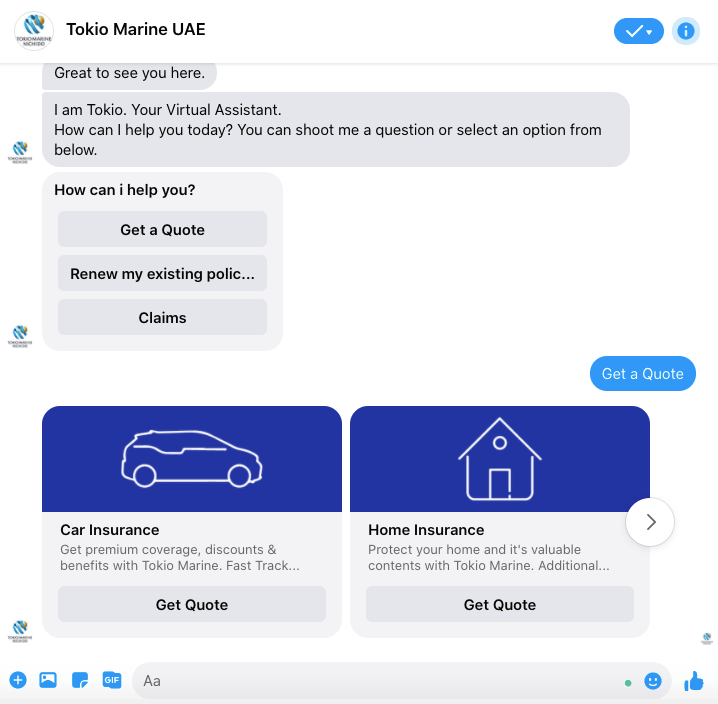
6. Chromeo
Chromeo is a Canada-based, Electro Funk band that uses a chatbot with TONS of personality to connect with their raving fans. They make talking to a bot feel like the absolute opposite of robotics.
Chromeo sends song recommendations to their fans via their Messenger Chatbot. It pushes out suggestions and essentially markets its own music while making it a fascinating experience.
7. Garasi
Garasi, a leading Indonesian car dealership simplifies online shopping with the Facebook Marketplace and a Facebook solution with Engati to handle incoming requests. With the huge inflow of repetitive queries coming, it was difficult to scale and attend to these customers in real-time. Instead of having agents respond to queries, Garasi’s bot picks up the vehicle ID directly from the end user’s message. With Engati’s extensible integrations, the bot was able to fetch the contact number from the database and reply to the customer.
The bot was able to handle 3x users than the agents, which reduced the wait time by 77%. Garasi needed a system that was able to handle queries coming in from Facebook Marketplace. With Engati’s omnichannel feature, they were able to deploy the bot on Facebook Messenger.
8. Fandango
Fandango knows that a lot of their users don’t want to take the effort to switch apps just to access a bit of content. Sure they could just wait for users to download the app, navigate to the movie that they’re interested in, and then read the review or watch the trailer. But that’s more effort than a lot of the users want to make.
That’s why they came up with a Facebook Messenger Chatbot from which users can watch trailers and even find local showtimes.
9. Livspace
Livspace is a trusted interior design marketplace that connects interior designers, vendors, and customers across India and Singapore that provides end-to-end home interior services. As a design and technology-first start-up, they started to employ a combination of data science, algorithms, and design to create unique experiences for homeowners and scale the job of interior designers.
Their 1st stepping stone into this venture is a Messenger chatbot. Through Facebook Messenger, their leads and customers have the ability to browse through Livspace’s catalog without having to open extra windows or download extra apps. And if users felt stumped, a Live agent can swoop in and help them navigate.
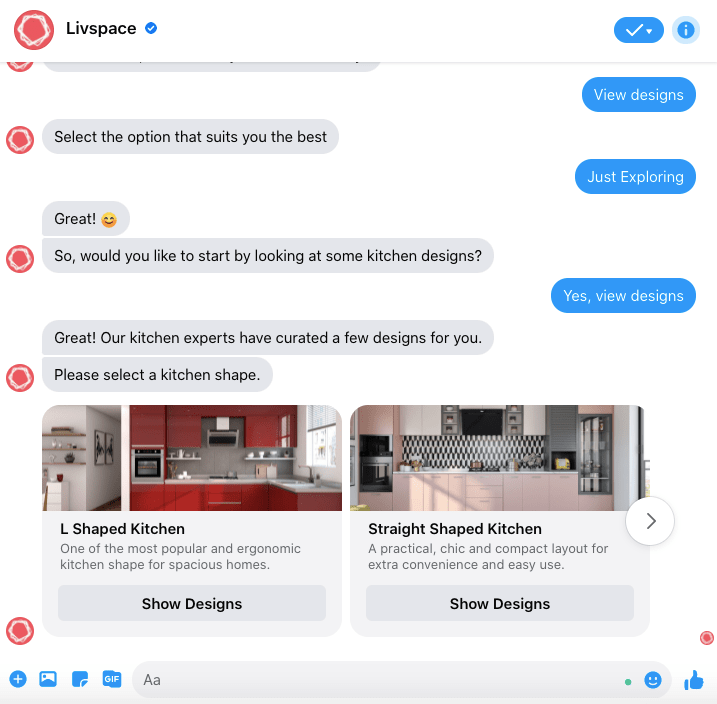
10. XacBank
XacBank is one of the largest systemic banks serving individual consumers, small and medium-sized enterprises (SMEs), and corporate customers by providing a full range of banking, insurance, and other value-added financial products and services. Their vision is to bring world-class financial services to Mongolia. Since Facebook is one of the most popular messaging applications in Mongolia, they decided to pull customers in with a Facebook chatbot.
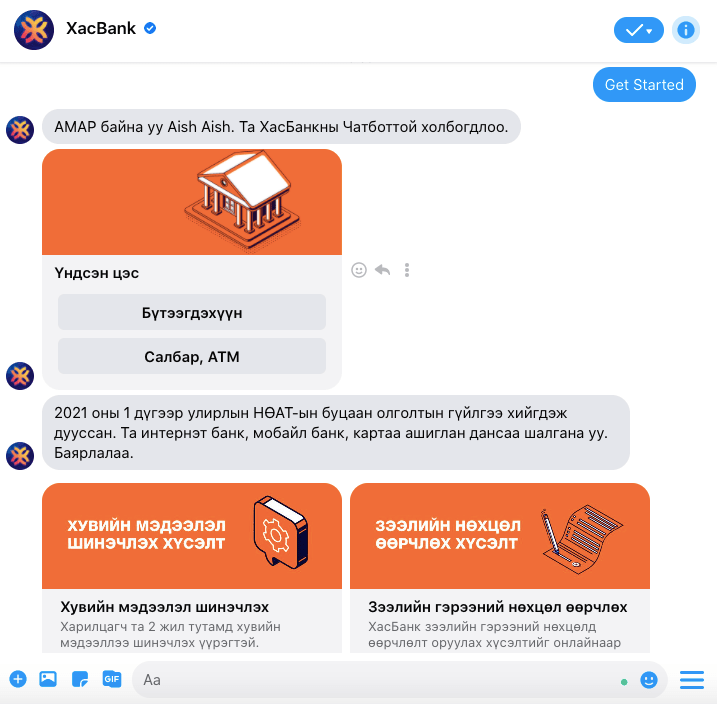
Build a Facebook Messenger Chatbot in 10 minutes
Did you know that chatbots have single-handedly contributed to an increase in profits by 25%?
Also, 43% of millennials leverage social channels to engage in customer support today. Chatbots at social platforms allow businesses to automate conversations with people who click on your Facebook Messenger to start a discussion. Through this, people can easily get in touch with your business.
Well, that sounds worthwhile, and you know what? Anyone can build this bot! Using bot-building tools such as Engati, all you need to be is S-M-A-R-T. There is no coding required at all! Convenient, isn’t it?
So, to create a Facebook Messenger chatbot, follow these simple steps:
- Sign up with a digital CX platform register with Engati for free to get started right away!
- Go to the Bot MarketplaceExplore Engati’s Bot Marketplace. Then identify your use case, go through 150+ bot templates, and download one that’s perfect for your requirements.
- Construct and customize your conversational flow you can add carousels, build paths, use multilingual features, and much more. You can also customize your own welcome message and default answers, though they’re already inbuilt in our bots using the NLP engine.
- Go to the ‘Deploy’ section after you’re done building the botThis section lets you integrate your bot on any platform of your choice. Our bots can be currently integrated on 12 platforms like Slack, Facebook Messenger, Whatsapp, Kik, Telegram, etc, including Zapier and JSonAPI that allows more integrations to be possible.
- Make sure you have a Facebook page already and your account is connected to integrate a bot on your Facebook page, having an existing Facebook account is a given!
- Link the bot to your Facebook page to deploy the bot on Facebook, copy your Facebook account URL, paste it in the deploy bar, hit the deploy button, and voila! Here’s your new Messenger bot!
Facebook Messenger bot best practices
Here are some hard-earned tips from the experts, aimed at those of you who are ready to build your own Facebook Messenger bot.
Set your expectations
No bot can do everything — yet. When you’re designing your first campaign, select one goal or use case for the bot to handle. Popular ideas include customer service, lead identification, product promotion, or discovery. Keep it simple, and walk before you run.
2. Set your customer’s expectations
This works the other way, too: often, your bot will be teaching the user how to interact with it as it goes. Alas, utopian-minded people who expect your appointment-booking bot to pass the Turing test may be disappointed. And folks who have no idea what a bot is could be equally frustrated. Clearly define the chatbot’s role in initial interactions to keep everyone on the same page. Then, throughout the interaction, program the chatbot to take the lead in guiding the user through the experience.
3. Invite personalization
Segmenting your customers and getting to know them drives engagement. Bots that invite a person to identify their preferences and narrow down options have much higher click-through rates. Build a bot that people genuinely want to interact with.
4. Get to the point
Bots are still pretty novel, but ultimately the goal here is to save users time. According to Jonathan Schriftman of Snaps, there’s a significant drop in users when a bot takes more than five clicks to get to point-of-sale.
5. Always have a human on-hand
A bot’s success depends on its ability to recognize when a human being is needed. Automated conversations are fabulously speedy and responsive, but they can’t replace human connection. Customers should have the option, at any point in the conversation, to connect with a person.
6. Be transparent
While a bot’s ability to store and remember information is one of its most attractive features, be upfront with users about data retention. What data will be stored? How will it be used? How can a person opt out? Give your users power over their private information.
7. Keep learning
Once you’ve built it, integrate your bot into your marketing calendar and your overall Facebook strategy. Your Facebook Messenger bot isn’t replacing email, customer service agents, or apps yet, but it offers features of all three, which means it must be treated like the unique beast it is.
Conclusion
Zuckerberg clearly created a winner when he launched Facebook Messenger Chatbots. Missing out on these would be a mistake that you would definitely not want to make.
We can make it even easier for you to make and deploy a chatbot on Facebook Messenger. With Engati, you can build and create a chatbot without having to know anything about coding. But we don’t just stop there. We let you deploy your bots on a variety of platforms like WhatsApp, Twitter, and even your own website.
Register with Engati to build your very own Facebook bot today!
Don’t forget to give us your 👏 !




Facebook Messenger Chatbot was originally published in Chatbots Life on Medium, where people are continuing the conversation by highlighting and responding to this story.
